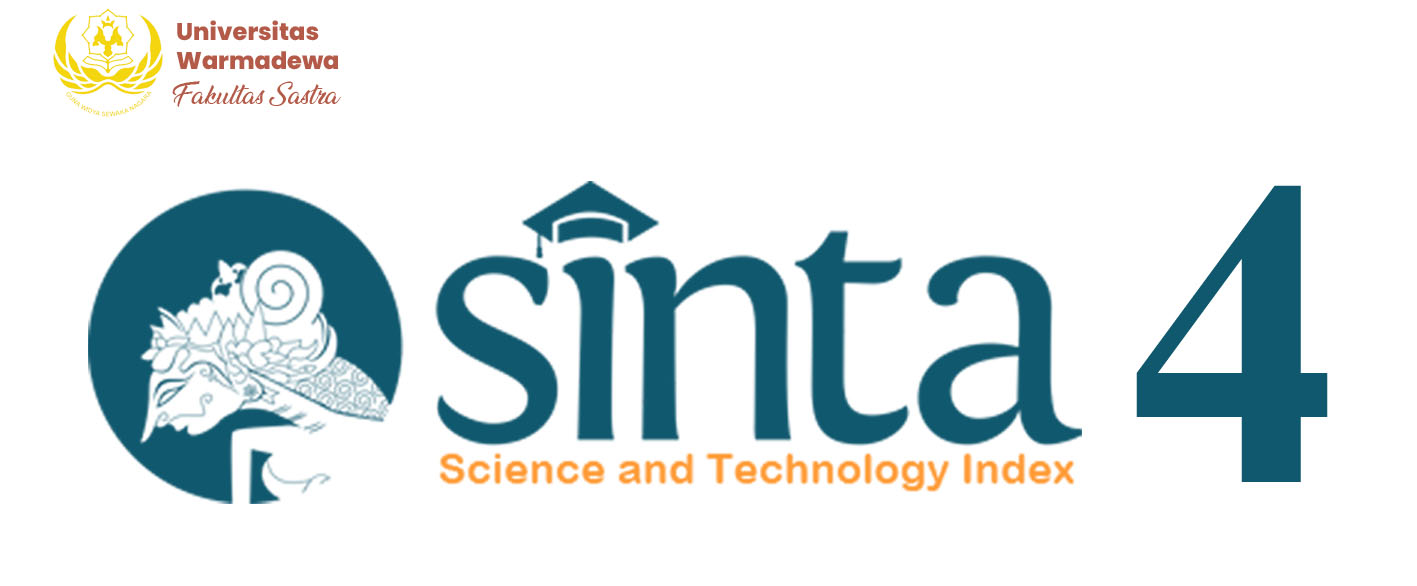PLOT OF AGATHA CHRISTIE’S THIRD GIRL
DOI:
https://doi.org/10.22225/kulturistik.4.1.1584Keywords:
Agatha Christie’s Third Girl, novel, plot structureAbstract
This research aimed to examine the parts of the plot structure and also the elements which build up the parts of the plot structure of this novel. The theory used in analyzing the data was the theory on the plot. The theoretical concepts were primarily taken from William Kenney’s book entitled How to Analyze Fiction (1996). Based on the analysis, the plot structure of Agatha Christie’s ‘Third Girl (2002) consisted of three parts: beginning plot, middle plot, and ending plot. The beginning plot of this novel told us about: (a) Hercule Poirot’s peaceful condition after having breakfast; (b) his attitude of scathing view on Edgar Allan Poe; (c) Miss. Norma’s performance with vacant expression; and (d) Hercule Poirot’s good relationship with Mrs Oliver and with Mrs Restarick. In the middle plot of this novel, the story of this novel presented about: (a) Mrs Restarick’s psychological conflict; (b) Andrew Restarick’s angriness because of David Baker’s relationship with his daughter, Miss Norma; and (c) Mrs Adriana’s unsuccessfulness to find Miss. Norma at Borodene Mansions. The events described in the complicating plot of this novel are about: (a) the investigation of Miss Norma as a suspected agent attempting to commit the murder of Mrs Restarick; (b) the secure of Miss Norma suspected to have committed murder by Dr. Stillingfleet at the time of throwing herself down in front of Jaguar; and (c) Dr Stillingfleet’s offering to Miss Norma to live at Kenway Court to hide herself from the inquiry of her father.References
Diyanni, R. (2001). Literature: Reading Fiction, Poetry and Drama. Oxford University Press.
Drucker, P. (2014). Innovation and Entrepreneurship. Routledge.
Hornby, A. S. (1995). Oxford Advanced Learner’s Dictionary of Current English. Oxford University Press.
Kenney, W. (1966). How to Analyze Fiction. Mahhatan Monarch Press.
McMahan, E. and, & Day, S. (1984). The Writer’s Rhetoric andHandbook. McGraw-Hill, Inc.
Meredith, R. (1989). The Professional Story Writer and His Art. Longman Inc.
Perrine, L. (1978). Literature: Structure, Sound, and Sense. Harcourt Brace Jovanovich, Inc.
Reaske, C. R. (1970). The college writer’s guide to the study of literature. Random House.
Richard T, S. (1986). Sociology. McGraw-Hill Book Company.
Shaw, H. (1972). Concise Dictionary of Literary Terms. McGraw-Hill Book Company.
Wellek, R. and, & Austine, W. (1956). The Theory of Literature: A Harvest Book. Harcourt, Brace & World, Inc.











